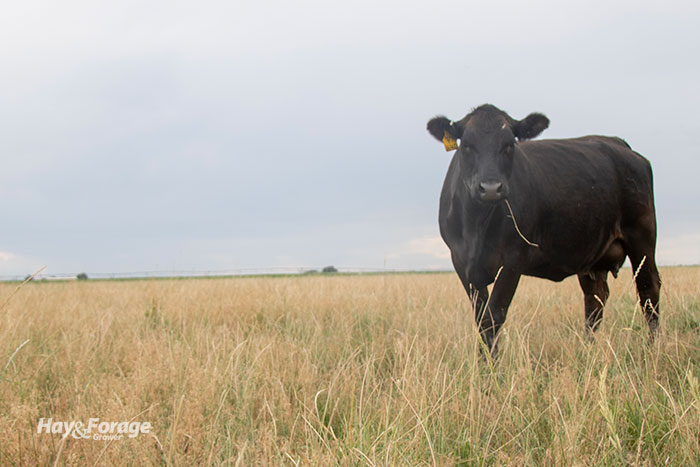
Cool-season grass pastures are almost always going to go dormant and cease growth at some point during the summer. It’s a fact that most graziers live with, and the good ones have predetermined plans to mitigate the situation.
“Optimal growth of cool-season grasses and legumes occurs when temperatures are 60°F to 70°F with 1 to 1.5 inches of rain per week,” Jason Cavadini said during a presentation at the GrassWorks Grazing Conference held in Wisconsin Dells, Wis., earlier this month. The University of Wisconsin’s extension grazing specialist added that extreme heat and/or moisture deficit often shut down growth during July and August.
One could argue that a drought is simply an early and prolonged summer slump, so the way we manage against one can also be effective for the other.
A good drought plan starts with the principles of managed grazing, Cavadini said. That translates to rotating paddocks at least every three to four days, leaving 4 to 6 inches of residual growth after grazing, resting pastures 30 to 40 days between grazing, and using an appropriate stocking rate and density.
In responding to a drought once it occurs, Cavadini listed some initial strategies to help cope with the situation. These are:
1. Slow down the rotation. This runs counter to what a lot of people think and do, Cavadini noted. It’s best to slow down the rotation and extend the rest period between grazing. The primary goal is to keep the plants from going dormant.
2. Do not overgraze. Leaving an adequate residual is more important during times of drought than during times of adequate moisture. “Overgrazing during a drought can cause irreparable long-term damage, resulting in costly reseeding,” Cavadini asserted.
3. Encourage optimal forage utilization. Although this is not always popular, Cavadini said that animals need a smaller area but with more frequent moves during a drought. This might mean moving animals every 12 hours. The result will be a slowed rotation that leaves an adequate residual with optimal forage utilization. It will also encourage the animals to consume the more mature forage, which they might not do with a larger area and less frequent moves.
4. Know when to pull animals off pasture. Sometimes it comes to this, Cavadini said. You might need to just unroll bales for a while to preserve the future productivity of the pasture but be sure to spread out the hoof traffic. The other option is to feed hay off pasture or in a sacrifice paddock. “Having a surplus of hay on hand should be a part of the drought contingency plan,” Cavadini said.
5. Weigh the cost of clipping pastures. If you typically like to clip pastures, make sure that the mower is set high enough so that plants in the vegetative growth stage aren’t getting clipped. In other words, only clip off old stems and seedheads.
6. Destock, if needed. This is usually another unpopular alternative, Cavadini said, but prices were pretty high last summer, so it made the decision easier. The grazing specialist noted that it doesn’t make much sense to put high-cost feed into marginal animals during a drought and then still have to feed them through the winter. Rather, sell some animals and restock in the spring.
Cavadini encouraged graziers to prepare for rather than respond to a drought or summer slump. In addition to the basics of rotation, residual, and rest, some acres dedicated to alternative forages might prove beneficial. Warm-season annuals or perennials are effective forage resources during mid-summer when cool-season grass growth slows or ceases.

